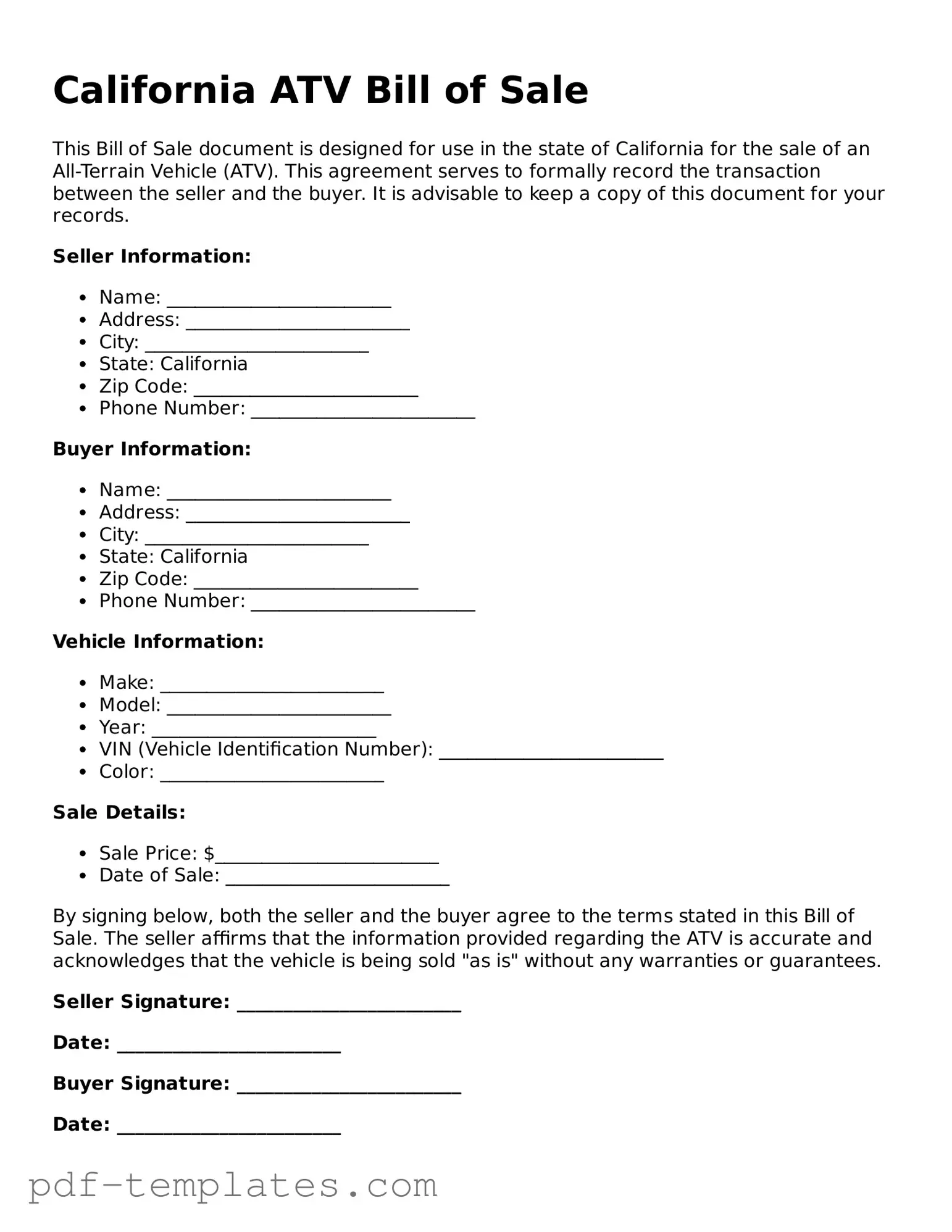The California Vehicle Bill of Sale is a document that serves a similar purpose to the ATV Bill of Sale. Both documents facilitate the transfer of ownership for vehicles. The Vehicle Bill of Sale includes essential details such as the buyer and seller’s information, vehicle identification number (VIN), make, model, year, and sale price. This document is crucial for registering the vehicle in the buyer's name and ensuring a smooth transition of ownership.
The Boat Bill of Sale also shares similarities with the ATV Bill of Sale. Like the ATV Bill of Sale, this document outlines the transaction between a seller and a buyer for a boat. It typically includes the boat's specifications, such as the hull identification number (HIN), make, model, and year. Both forms serve to protect the interests of both parties by providing a record of the sale and confirming the transfer of ownership.
Another document that parallels the ATV Bill of Sale is the Motorcycle Bill of Sale. This form is specifically designed for the sale of motorcycles and contains similar elements, such as the motorcycle's VIN, make, model, year, and the sale price. Both documents serve to validate the transaction and ensure that the new owner can register the motorcycle with the appropriate authorities.
The Snowmobile Bill of Sale is another document akin to the ATV Bill of Sale. It records the sale of a snowmobile, detailing information like the snowmobile's VIN, make, model, year, and sale price. Just as with the ATV Bill of Sale, this document provides both the buyer and seller with a legal record of the transaction, making it easier to transfer ownership and register the snowmobile.
The Trailer Bill of Sale is also similar in function to the ATV Bill of Sale. This document is used when selling a trailer and includes necessary information such as the trailer's VIN, make, model, year, and sale price. Both documents serve to establish a clear record of ownership transfer, ensuring that the buyer can properly register the trailer in their name.
Lastly, the Personal Property Bill of Sale encompasses a broader category but functions similarly to the ATV Bill of Sale. This document can be used for various types of personal property sales, including ATVs, and includes details about the item being sold, the buyer and seller's information, and the sale price. Like the ATV Bill of Sale, it provides a written record that protects both parties and facilitates the transfer of ownership.
